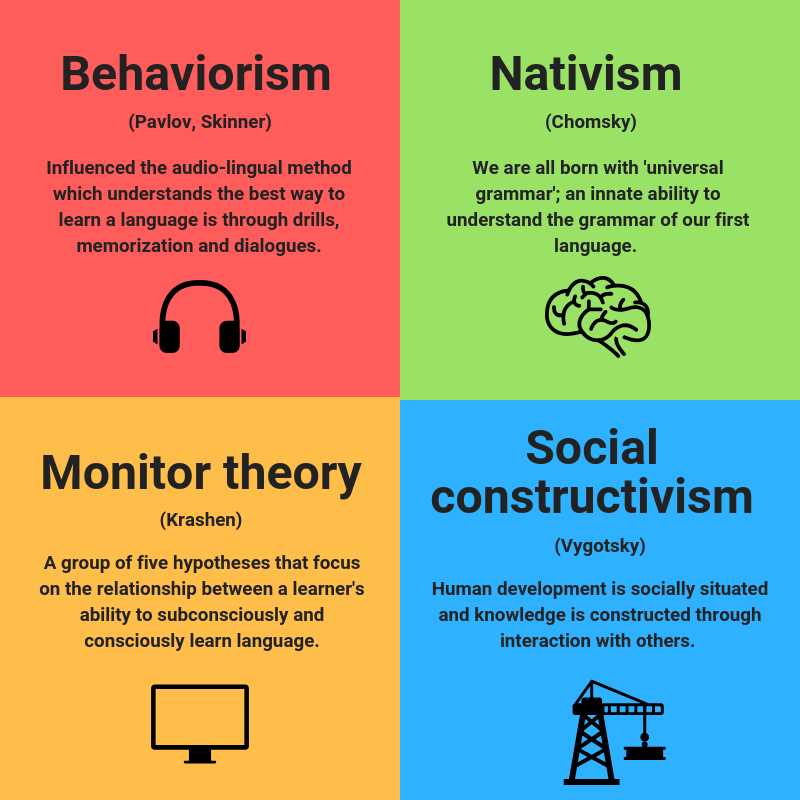Linguistically responsive teaching: Strategies to support international students and language learners

The University of Idaho launched the Global Student Success Program in partnership with Navitas in 2017 and kicked off its first annual Spring Lecture Series for 2018 in March. The goal of the series was to share research and skills to support best practices in teaching international students and English language learners. The event brought together experienced faculty members from the Global Student Success Program and the American Language and Culture Program at the University of Idaho.
You can watch the full recording of Margot Volem’s presentation on Linguistically Responsive Teaching here. Keep reading for a summary of the ideas below.
The multiple facets of language
We often make a set of assumptions about people based largely on their accent and pronunciation, which is magnified when they are English language learners.
The ‘Sapir-Whorf hypothesis’ or ‘whorfism’ comes from a theory of linguistics that says the structure of language shapes or limits the way the speaker views the world. There are two versions of this hypothesis: the strong version and the weak version.
- Linguistic determinism: The strong version of this hypothesis argues that language limits human cognition and the ability of our thought. For example, in English, we have to modify the verb in order to express tense or time (past perfect, present perfect, future perfect, present continuous, etc). In Chinese, you don’t modify the verb but instead use adverbs of time and time markers such as ‘yesterday’ or ‘weekly’. The strong version of whorfism attributes particular qualities to cultures depending on how their language is structured.
- Linguistic relativity: The weak version of this hypothesis says language influences and affects a speaker’s thoughts and worldviews. By contrast, the weak version of the hypothesis says that culture shapes language. Examples of cultural constructs affecting language can be seen in the addition of words to the dictionary such as ‘hangry’ and ‘chillax’.
Key theories in second language acquisition (SLA)
How do all these theories and hypotheses translate into classroom practices?
In order to teach in a linguistically and culturally responsive way and demonstrate linguistically responsive instruction (LRI), educators really need to have an understanding of both the nature of language, such as the Sapir-Whorf hypothesis, as well as an understanding of how learners learn language; the second language acquisition theories.
Strategies for linguistically responsive teaching
Here are a few simple strategies for incorporating LRI in the classroom to support multi-language language learners:
- Get to know your students: Learn their names and how to pronounce them
- Schedule mandatory office hours at the start of term: This will help students understand that it’s ok to ask questions
- Express an interest in culture: Ask international students questions about themselves, their culture, their academic experience, etc.
- Elicit information about students in a variety of ways: Try to understand how things may be done similarly or different in other cultures to understand the most effective way to communicate with students, for example, students may be more familiar with written feedback than verbal feedback
- Scaffold academic language/discipline specific terminology: Provide instructional scaffolds such as context clues or visual demonstrations to address potential language issues
- Explain the same concept in a variety of ways: Use synonyms to express ideas in different ways
- Use gestures: This can be very helpful for students who are trying to hear the difference in words e.g. ‘macro’ and ‘micro’
- Correct pronunciation: You’re doing them a favor by helping them with their pronunciation and overall intelligibility. Perfection is not the goal but clarity is
- Decrease anxiety: Think about different groupings you can put students in to see which arrangement allows students to work best
Methodology is just a small part of teaching and not every method is going to work with the teacher. But if you can try to incorporate a few things with your international students, you can make a difference to their learning experience. As highlighted by Palmer (1997):
Good teaching cannot be reduced to technique; good teaching comes from the identity and integrity of the teacher. In every class I teach, my ability to connect with my students, and to connect them with the subject, depends less on the methods I use than on the degree to which I know and trust my selfhood – and am willing to make it available and vulnerable in the service of learning.
Whether you’re teaching English or working with international students, implementing strategies to achieve linguistically responsive instruction can benefit students’ ability to succeed in their learning, furthermore contributing to the overall internationalization of the classroom and college.
To continue the conversation or for more information, please contact Margot Volem, or share your thoughts and ideas via Yammer, Twitter or LinkedIn.
References
- Palmer, P.J. (1997). The courage to teach: Exploring the inner landscape of a teacher’s life. San Francisco, CA: Jossey Bass Publishers.

